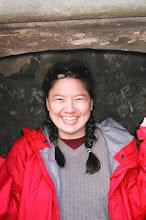A seclusion of embiopterans
Nothing to do with ants, but I enjoyed this blog entry about embiopterans. Via A Catalogue of Organisms:
A work colleague and I got into a conversation a while ago about collective nouns, and of course that eventually got onto the question of making up appropriate terms for groups of animals that currently lack collective nouns. One suggestion that I came up with that I still rather like the sound of was a "seclusion of embiopterans". From now on, I urge you to use the term when discussing embiopterans.
If through some bizarre oversight you haven't regularly found yourself discussing embiopterans, then you really should be. Also known as webspinners or embiids, embiopterans are one of the definite contenders for the total of world's coolest insects. I have personally come across a specimen in the wild just once that I found clinging to a piece of bark I pulled off its tree - unfortunately, I have to admit, no-one around me quite got what I was getting so excited about.
Webspinners are small insects that live in silken galleries they build in secluded areas such as under bark or rocks (the picture above from the homepage of Janice Edgerly-Rooks shows a female webspinner peeping out of its home). There is something of an esoteric contention about what exactly the correct name for the webspinner order should be - Embioptera, Embiidina or Embiodea all can be found. I'm going to stick with Embioptera for no good reason. The name means "lively wings" and is wildly inappropriate - webspinners are not noticeably lively, and more often than not lack wings (females are invariably wingless, males can sometimes be). It has been suggested that the name refers to the flicking movement of the male wings. The wings of male webspinners have large blood sinuses developed from the veins that are pumped full of haemolymph to make the wings rigid when they fly. When the haemolymph is drained from the sinuses, the wings become limp and floppy, able to move in whatever direction is required to let the male crawl through a female's silk nest, even bending forward over the head if the male goes into reverse.
Webspinners are often referred to as semi-social and females may share inter-connected galleries. Females also show a high level of parental care. However, females will not show any care for the young of others, and social interactions between females should probably be regarded as opportunistic rather than required (Grimaldi & Engel, 2005). The female and juvenile webspinners emerge from their silken palaces at night to feed on vegetation and detritus. Adult males, on the other hand, do not feed.
The webspinner's silk glands are located along the edge of the third segment of the forelimb tarsus, which is noticeable broadened as shown in the diagram above from BugNetMAP. The German name for embiopterans, "tarsenspinner", is therefore entirely apropos. The stunning "Life in the Undergrowth" series that I've had cause to mention before included spectacular footage of a webspinner constructing its silken fortress, waving its forelimbs in front of itself in a motion that can only be described as "wax on, wax off". So impermeable is the resulting wall that the spinner must actually cut through it with its mandibles in order to drink from water drops lying on the surface if it is not to dry up completely.



Nice post... it's great to see webspinners getting a spot in the limelight! On the subject of the ordinal name, Grimaldi & Engel (2005, p. 196) note that Embiidina is the most commonly used, but regard it as misleading (the suffix -ina is currently in use as the standard ending of subtribal names). As Embioptera (Greek: "lively wing") is also inappropriate, they advocate the use of the name Embiodea instead.
ReplyDeleteThannks for writing this
ReplyDelete